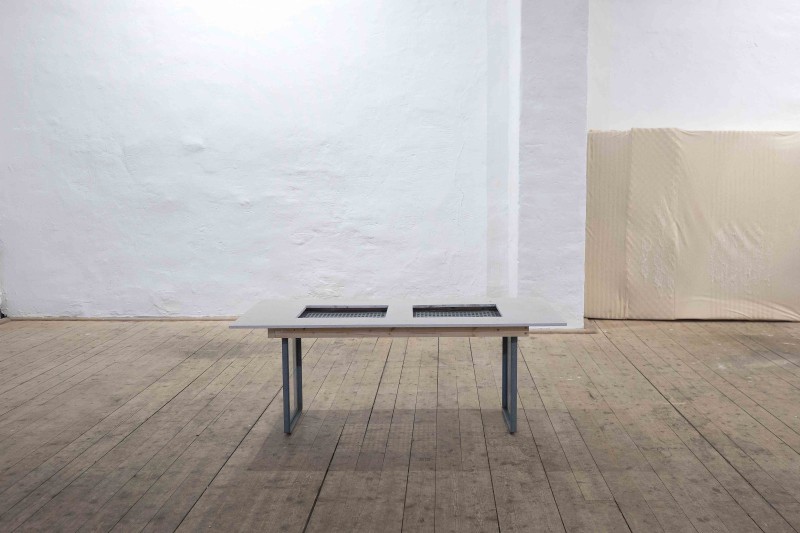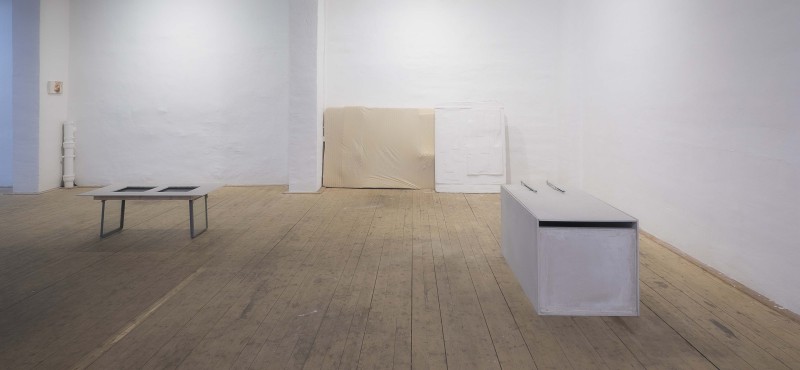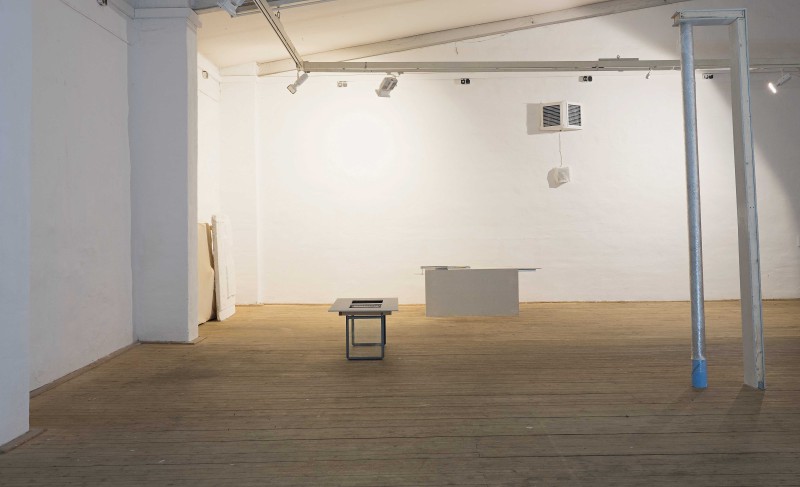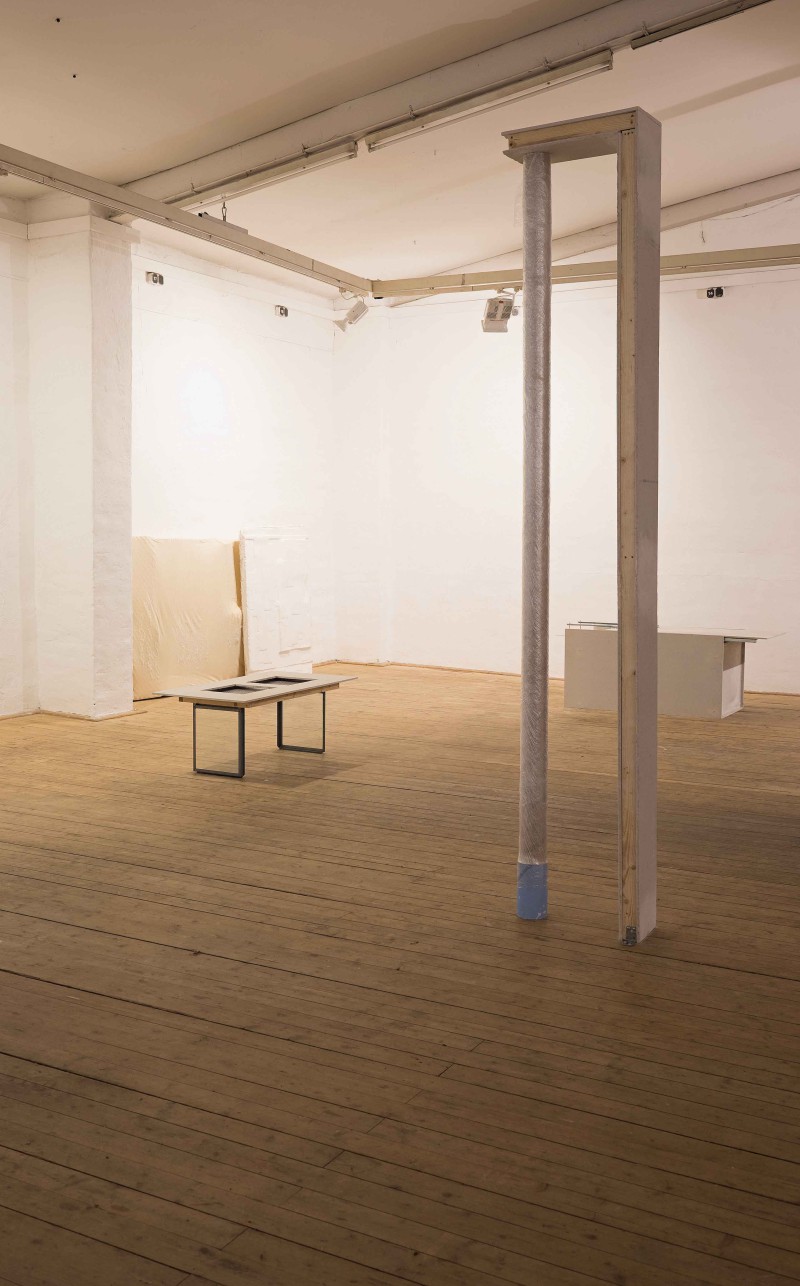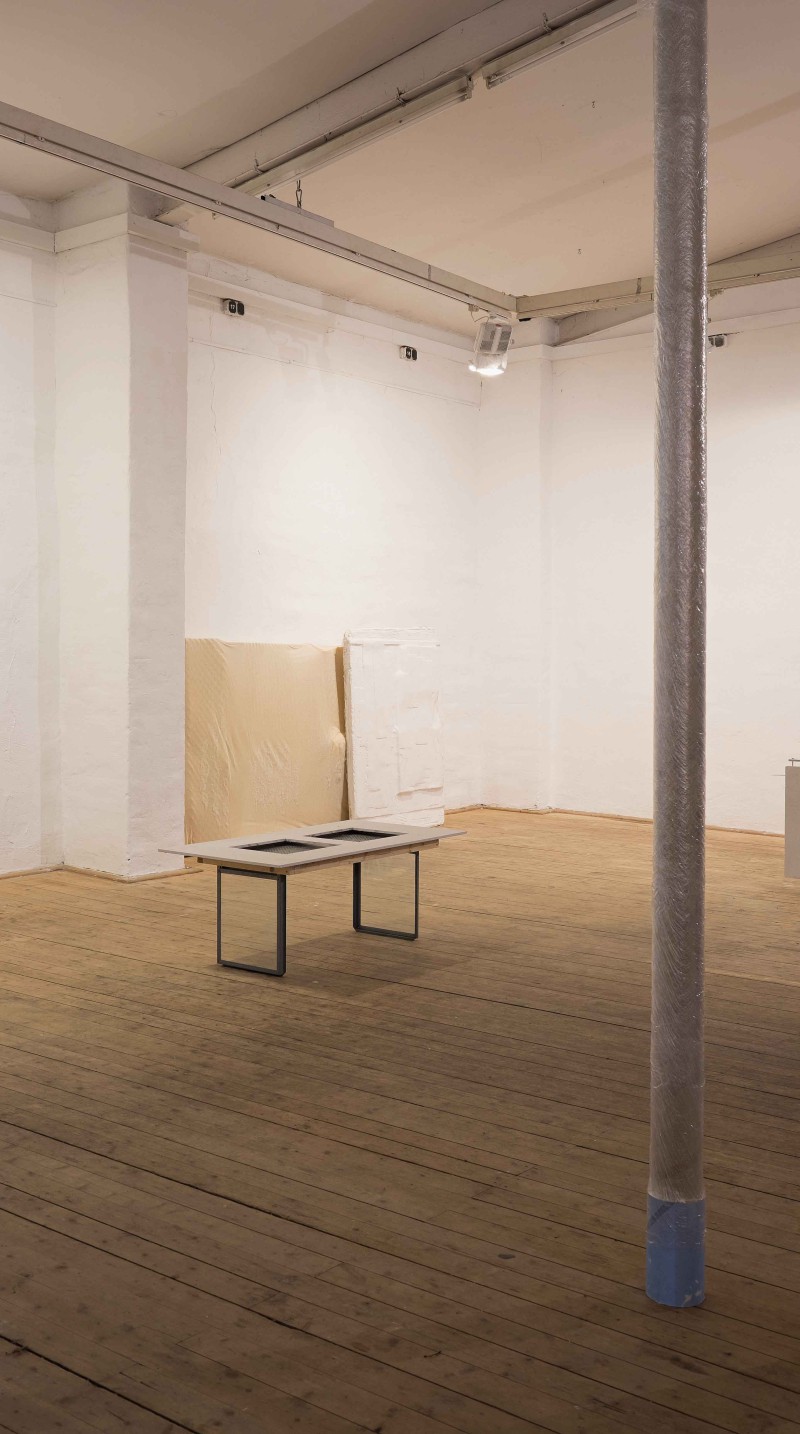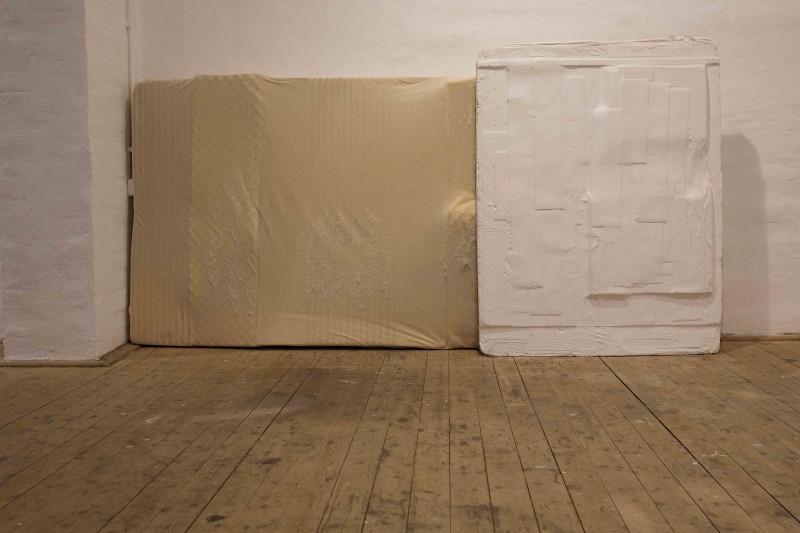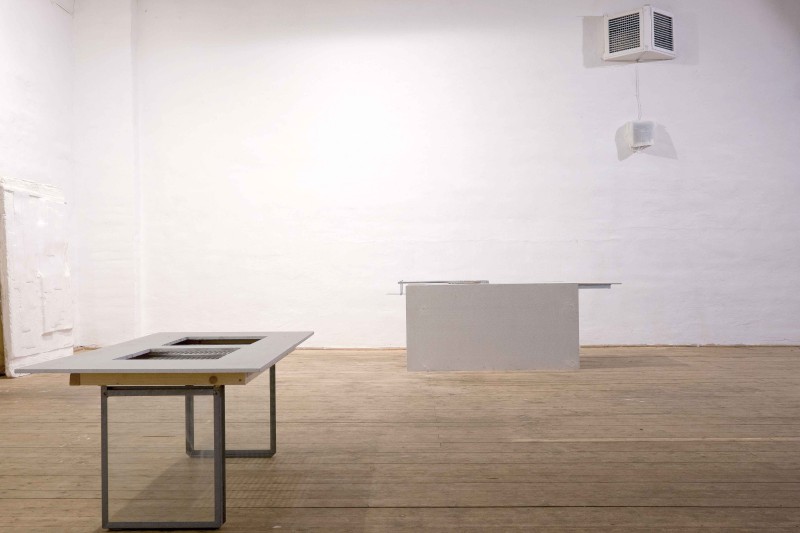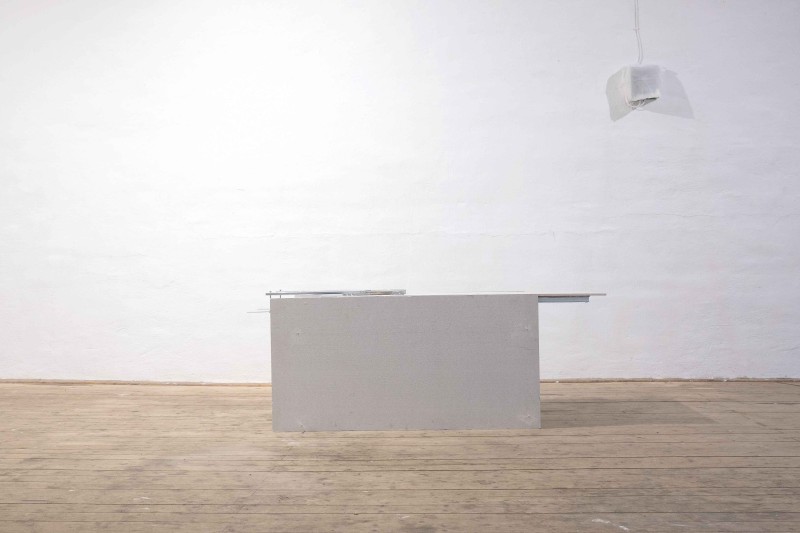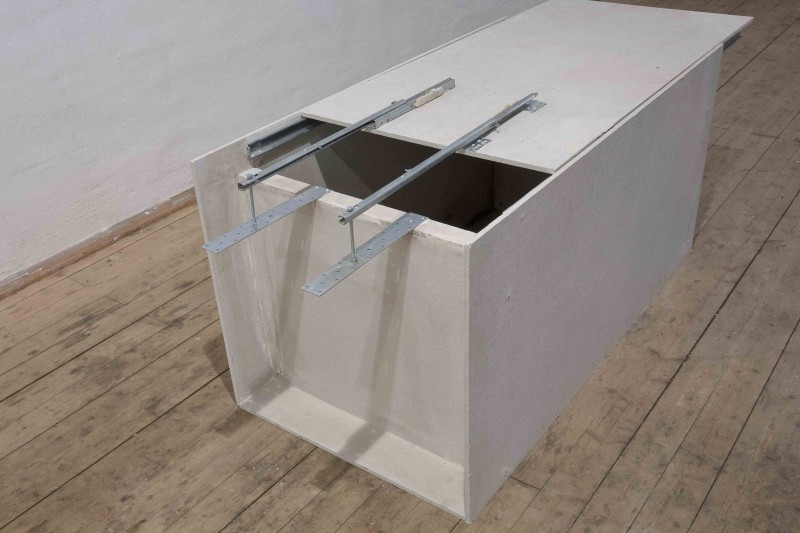Trockenbau
»Komplex 6.7« Alte Feuerwache Cologne
(Ausszug aus „Augenblicke flüchtiger Verflechtungen“ von Prof. Dr. Thomas Schmaus)
In the field of the Light-Construction-System is the whole complex in the focus of the construction. With the inner functionality single elements can get heavier. But with the integrated function the system gets much lighter, which is a doubt in a light building construction. With addaptive supporting elements especially the princips of the structure-and light-construction-building are used. In this field the Dry Building System belongs to the most known systems. This system guide me as a role model for my process, to build volumes and rooms fast.
The screed plates offer a fast montage and a visually interesting structure. The mix out of wood fibers in combination with screed gives the plates a hard and solid strength. The fragments of my installations stay in opposite to the dry building method in an unfinished state. They got no extra finish with concrete or other surfaces. A perfect expanded room will never reached. Following on the DIN Norm i am transferring the system into a language which relates to classical sculptering issues. The unfinished opbejcts building a net out of invisible surfaces which taking the surrounding. The whole installation gives frame conditions for an endless system of imaginated rooms inside rooms. It stays in a between state.
An ongoing shifting of rooms is happening during the recipient is circeling around the place. If now a static room gots established or a endless passage belongs to recipient.
The object colors are cold. Grey and Blue without any saturation which developes an envirement, which not really relates to a living cosy appartment. The stele is 2,60m high. The height is a typical Norm height for an appartment. Between the pillar and the flat part of the object is the precise half of a door frame. It is wraped in plastic-foil to cover and secure the surfaces like it was recently delivered.
On the wall is a matress remains in a waiting position. It refers the isolation which are built in the supporting construction.
In einen ähnlichen Zwiespalt gerät man als Ausstellungsbesucher bei den Installationen von Nino E. Alonso. Dieser greift dafür auf Trockenbausysteme zurück die üblicherweise zur Erstellung von Bauteilen verwendet werden., die raumbegrenzend fungieren, aber keine tragende Rolle einnehmen: zum Beispiel von Zwischenwänden oder Säulen, Verkleidungen von Rohren oder Abhängungen von Decken. Diese sogenannten Halbzeuge sind als vorläufige und damit unfertige Elemente Teil des Fertigungsprozesses und lassen sich beinahe beliebig kombinieren. In ihrer Leichtbauweise eröffnen die Gibs- und Holzkartonagen daher vielfältige Gestaltungsmöglichkeiten. Alonso erweitert diesen Spielraum ins Unermessliche, indem er die einzelnen Elemente verändert und auf eine Art und Weise kombiniert, die sie – beispielweise durch die ungewohnte Anbringung von Schiebevorrichtungen – ihrem eigentlichen Zweck entfremden. Der Grundcharakter der Zuhandenheit geht dadurch nicht verloren, wird aber aufgebrochen für den musealen Modus der Vorhandenheit. Derart modifiziert und dekonstruiert lassen sich die Konstruktionselemente als eigenständige und in ihrer Rauheit und Grauheit widerständige Raumkörper wahrnehmen, die dazu provozieren, sich mit ihnen auseinanderzusetzen, indem man sich zu ihnen positioniert. In ihrer Unfertigkeit zwischen Entwurf und Umsetzung bleibt aber auch die Aufforderung präsent, etwas mit ihnen anzufangen. Die Rezipienten befinden sich dementsprechend in vielfältigen Zwischenzuständen, die für Unsicherheit sorgen, aber damit auch zur freien Gestaltung anregen.
